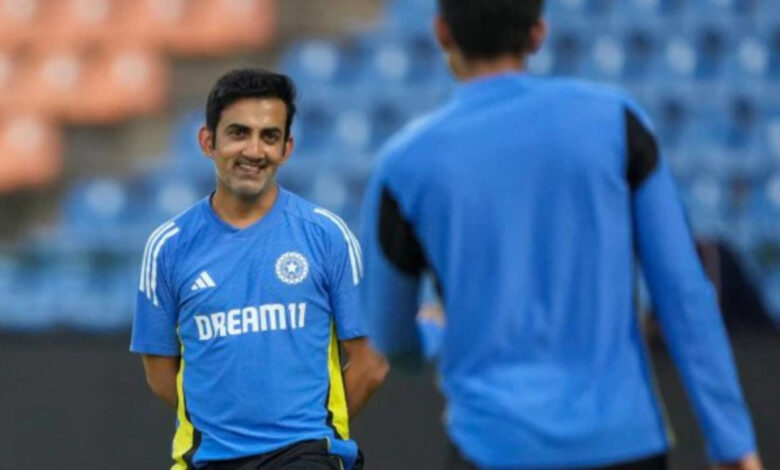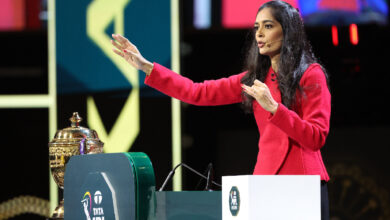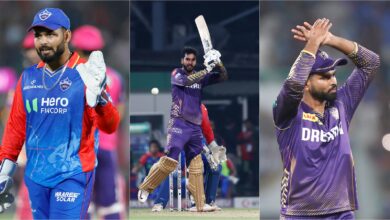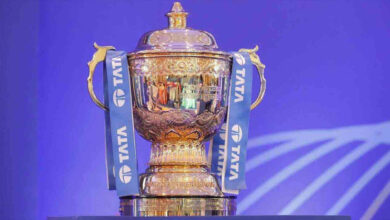Gautam Gambhir’s opening gambit: Left-right combos, floaters and bowling batsmen | Cricket News

The conditions in Colombo during India’s recent tour were reminiscent of the 90s. The pitches were slow, turned and sometimes kept low, tweakers understandably dominated, 43 of 54 wickets falling to them. In these conditions, India’s tactical board under new head coach Gautam Gambhir resembled that of his dant predecessor Greg Chappell; bold, progressive and aligned with time.Chappell’s idea of a modern ODI side had all the necessary elements—flexibility, left-right batting order, all-rounders (he labelled MS Dhoni an all-rounder too). While the World Cup debacle is much talked about, it overshadowed the success India enjoyed in the ODIs, where with batting and bowling depth they created a world record for most consecutive chases (17), which remains intact.
Like Chappell, right through the T20Is and ODIs, Gambhir preferred to employ the floaters in the batting order. Irfan Pathan being a case in point, It kept opponents guessing. Though these are early days in Gambhir’s era, there are enough indications that he wants to build on the foundations laid Rahul Dravid in the limited-overs. From the beginning of the T20Is in Pallekele and the three ODIs in Colombo, it was hard to second-guess what India would throw at the opposition to counter their tactics.
Left-right-left
With a talented group of left and right handed batsmen at his disposal, Gambhir preferred left-right combination, as deep as he possibly could. A shrewd and successful captain in his playing days, Gambhir remains an advocate of this strategy, especially when most teams don’t have an off-spinner. Against left-arm spinners and leg-spinners, a left-hander always brings an advantage. It is the reason why he sent the likes of Washington Sundar and Axar Patel ahead of KL Rahul and Shreyas Iyer in the ODIs. Rahul even came at No 7 in the second match.
It might get predictable, but the plan has worked for Gambhir at Kolkata Knight Riders, as a captain and coach. Moreover, in Rohit Sharma (ODIs) and Suryakumar Yadav (T20Is), he has two captains who are not alien to this concept, and have embraced similar tactics with Mumbai Indians.
Interestingly, as a broadcast expert Gambhir wasn’t a fan of this strategy. “If the batsman is good, regardless of whether he is a right-hander or a left-hander, we should see how he performs in every condition and against each bowler. It’s not a compulsion that you have to keep a left-hander in the squad or that you need to have three left-handers in the line-up. I don’t think we need to even start a debate like this,” he had said before India picked the squad for the 50-over World Cup last year.
But in the hot seat now, there were at least four left-handers – among Yashasvi Jaiswal, Rinku Singh, Rishabh Pant, Washington Sundar, Axar Patel, Shivam Dube— in the top seven in the T20Is with another coming later on. In the ODIs, it dropped to three, but Gambhir kept the batting order flexible. For instance, in the second ODI as per the team sheet, India’s first five batsmen were all right-handers and the next five were all southpaws. But India ended up sandwiching Dube and Axar between the top five.
Balance sheet
From being an ODI side that stacked seven special batsmen through much of the aughts, India turned bowling friendly in the last decade, more so when Hardik Pandya was unavailable. With none of their batsmen able to contribute as part-timers, India relied on five special bowlers, which meant their batting depth ended at No 7. Under Dravid, India tried to mask the crack, but in the 50-over World Cup final, they clearly missed one. They could have crossed the line with a bit of batting cover.
But Gambhir is quickly ringing in the changes. In the T20Is, India used at least six bowling options and in the last one used seven, with the scarcely used Suryakumar and Rinku bowling at the death. This plan spilled onto the ODIs as well. Rohit also used six bowlers despite Pandya being unavailable and without compromising on batting depth. choosing the likes of Washington, Riyan Parag, Dube and Axar, Gambhir wanted India to have enough depth in batting and bowling without compromising on the team balance.
The idea of picking multifaceted cricketers, besides a mix of left and right handed batsmen, reflects on the Duleep Trophy squads as well. It is the reason why even Dube, not famed for his red-ball prowess, found a place in the India A squad. So did Parag and Tilak Varma. The B team has Musheer Khan, Nitish Kumar Reddy, Ravindra Jadeja, Sai Kishore, Washington. The C and D teams are short on this front, but they still have left and right handers.
India now have only three ODIs before the Champions Trophy. With the conditions expected to be slow – be it Pakan, UAE or Sri Lanka – Gambhir has set the ball rolling. It sounds promising and how he builds from here would well determine his tenure.







